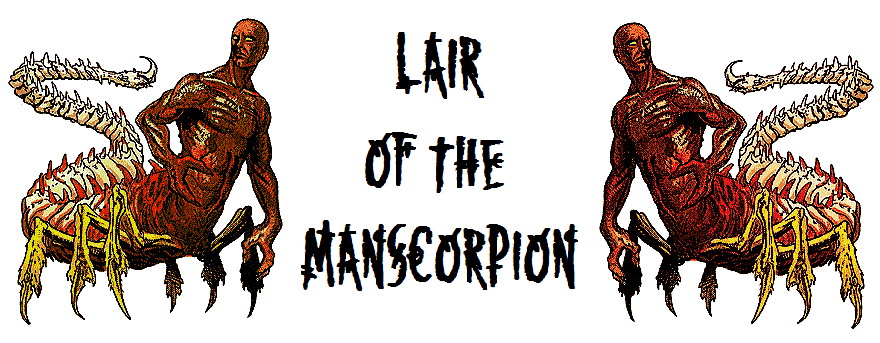Apologies for the missed post, whoever's reading this. Despite my apparent resolve in the last post, I spent the whole weekend fretting about what to run for my new group and how. I stopped and started a bunch of notes that didn't go anywhere. I drew an entire dungeon level and keyed half of it before scrapping both. Finally, on the way over to the game I decided on just straight up running Keep on the Borderlands, and then changed my mind again literally while the players were rolling up characters.
What I ended up going with, and am now committed to (thank God), is Keep of the Borderland with my own megadungeon, The Maze of the Mad Magus, in place of the Caves of Chaos. I came up with the name that morning; I had Castle Greyhawk on my mind, having almost decided to run Greyhawk Ruins of all fucking things (and I still might have if the maps weren't so goddamn terrible). I was going to just use the first level of Stonehell and then start drawing my own maps for the subsequent levels, but the duo never even left the Keep because they immediately got suspicious of everyone's favourite Friendly Priest Who Is Actually an Evil Cultist and spent the session spying on, and avoiding being assassinated by, him. That's given me a chance to work on the first level, which is actually looking pretty good, but we'll see if I get enough done in time for it to be useful.
For the purposes of that first session. I gave my players the thinnest of back stories: Xilbog, the eponymous Mad Magus, built the Maze some three hundred years prior, disappeared about two hundred years after that, and the place has since become a popular adventuring locale; the Keep (which I'm still calling Castle Goatmass, though I've dropped the additional village) was built to keep an eye on the place and to facilitate adventurers moving in and out and contributing to the local economy.
For next session, I hope to have an elaborate rumour table completed (more on this, and why I love rumour tables, next time), but the first thing I've had to establish are some basic facts about the Maze and its history; these are the things the PCs probably already know, or can easily find out from pretty much anyone in the area. Let's call them "non-rumours":
MAZE OF THE MAD MAGUS Non-Rumours
- The Maze was built some 300 years ago (when the Kingdom of Elisbury was still fractured into the warring territories of various barbarian tribes) by a magic user named Xilbog, who would later come to be known as “the Mad Magus.”
- With the Maze as his base of operations, Xilbog wreaked havoc on the barbarians, and later on the Kingdom, for a century. A truce was finally drawn: Xilbog was to leave Elisbury alone in exchange for being granted sovereign control of the land around the Maze; this is why Elisbury never expanded into the unclaimed wilderness to the south (a similar treaty was struck with the Dwarf Kingdom which lies underneath Elisbury). A custom was established of the Truce being formally re-affirmed every ten years.
- On the eleventh reaffirmation day (i.e. on the one hundred and tenth anniversary of the establishment of the Truce), Xilbog did not arrive at the customary meeting point. He failed to show up again ten years later. A small expeditionary force was sent to the Maze, and found it overrun by goblins, orcs, and other monsters. It was learned (through questioning some of these creatures) that Xilbog hadn’t been seen nor heard from in twenty years, and that creatures he had employed to guard the Maze or for other tasks had opted to just take over the first few levels of the complex for themselves. Other creatures had subsequently moved in, including whole tribes. That first expeditionary force returned with considerable quantities of gold and magic items, which began to attract adventurers to the area.
- After learning of the Magus’ disappearance, Elisbury tentatively established Castle Goatmass at the southern border not far from the Maze, both to guard against creatures emerging from the place and to attempt to begin the southward expansion which was so long denied it. Having a civilized outpost nearby increased adventurer traffic, which in turn began to boost the local economy. A small township grew up within the walls of the Castle, to cater to the needs of adventurers and those doing business with adventurers.
- There were initially disputes between Elisbury and the Dwarf Kingdom which lies underneath it (the two have long been strong allies) over whether human adventurers have any rights to enter the Maze and take its riches, given that it is underground and thus arguably belongs to the dwarves. The counter-argument goes that it never belonged to anyone but Xilbog and it should thus not be taken for granted that ownership should now pass to the dwarves just because it happens to be beneath the earth. After heated negotiations the consensus was finally reached that the Maze formally belongs to both kingdoms, who each have the right to tax half of the total revenue any adventuring party brings out (regardless of whether said adventuring party consists of humans, dwarves, or for that matter elves or halflings).
- It is not known how large or how deep the Maze is. Only the first few levels have been extensively explored, and even these have unknown corners.
- Adventurers have established a permanent settlement of sorts in the rooms closest to the entrance, replete with places to sleep, buy supplies, and get a drink.






